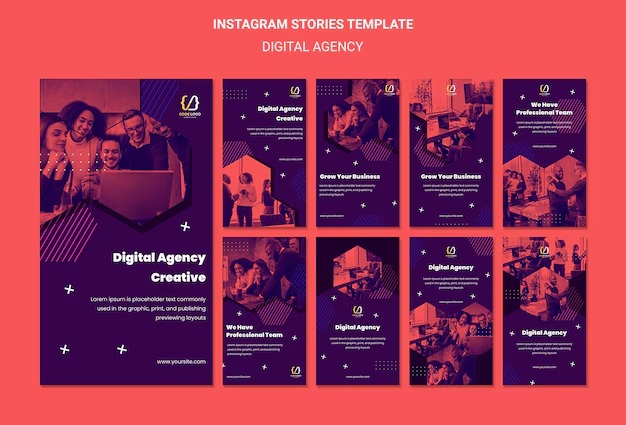Key AI Trends Shaping Technology in 2025
Implement machine learning models that prioritize transparency and interpretability. By 2025, organizations that invest in AI explainability tools will enhance user trust and facilitate smoother regulatory compliance, essential in sectors like finance and healthcare.
Adopt a hybrid cloud strategy to better integrate AI capabilities across existing infrastructures. Utilizing both public and private clouds allows for greater flexibility, cost efficiency, and improved data security while deploying advanced AI solutions.
Focus on developing AI solutions that enhance human productivity rather than replace it. In 2025, prioritizing human-AI collaboration will drive more effective outcomes in workplaces, fostering an environment where technology amplifies human creativity and decision-making.
Invest in AI cybersecurity measures to combat the increasing threat landscape. With cyber-attacks on the rise, AI-driven security solutions will be vital for real-time threat detection and automatic response, ensuring organizational resilience.
Leverage natural language processing advancements to create more intuitive user interfaces. By 2025, applications incorporating sophisticated conversational agents will dominate customer service and online interactions, creating seamless engagement for users.
Rise of Generative AI in Content Creation
Integrate tools leveraging generative AI for content development to enhance creativity and productivity in 2025. Focus on using these solutions to produce high-quality text, images, and videos that resonate with audiences.
Utilize natural language processing models to automate the drafting process. Train the AI with specific datasets to ensure the generated content aligns with the brand’s voice and targets the intended demographic effectively.
Explore AI-driven platforms that support personalized content recommendations, helping marketers tailor their strategies to individual user preferences, thus increasing engagement rates.
Invest in AI tools that analyze user interactions and feedback to refine content strategies continuously. This data-driven approach allows for real-time adjustments, ensuring relevance and appeal.
Incorporate human oversight into the generative process. Review and edit AI-generated materials before publication to maintain quality and authenticity.
Monitor trends in generative AI outputs to avoid generic content and ensure uniqueness. Cultivate a partnership between human creativity and machine capability to foster originality.
Stay informed about advancements in context-aware AI systems to enhance storytelling and improve emotional connections with the audience.
Integration of AI in Cybersecurity Protocols
Implement machine learning algorithms for anomaly detection to identify unusual patterns in network traffic. This can lead to the early identification of potential threats before they escalate. Utilize real-time data analytics to continuously monitor and assess potential vulnerabilities.
Adopt automated threat intelligence solutions that aggregate data from multiple sources, enabling quicker response times to emerging threats. Implementing these solutions can significantly enhance the organization’s ability to preemptively address risks.
Establish user behavior analytics (UBA) systems to create profiles of typical user behavior. These profiles can then be used to detect and flag anomalies that may indicate unauthorized access or insider threats.
| Technique | Description | Benefits |
|---|---|---|
| Anomaly Detection | Machine learning identifies unusual patterns in data. | Early threat identification. |
| Automated Threat Intelligence | Agglomeration of data from various sources. | Quicker response to threats. |
| User Behavior Analytics | Profiles of user behavior are created. | Detection of unauthorized access. |
Implement AI-driven incident response systems that automate the triage and remediation processes. This allows cybersecurity teams to focus on strategic initiatives while routine tasks are handled by AI. Establish protocols for continuous learning, where the system improves based on past incidents and responses.
Train your staff on the emerging AI-driven tools, ensuring they understand both capabilities and limitations. Regular updates and education are necessary to maintain effectiveness against evolving threats.
Regularly audit and test AI systems to ensure they function as intended. This includes stress testing under simulated attack conditions to gauge their reliability and responsiveness.
Personalization of User Experiences through AI Algorithms
Leverage advanced machine learning models to create hyper-personalized content for users. Implement collaborative filtering techniques to analyze user behavior and preferences. For example, using data from past interactions can tailor recommendations in real-time, thereby increasing engagement and satisfaction.
Data Collection and Analysis
Utilize data collection mechanisms such as user surveys, behavior tracking, and demographic information. Ensure compliance with privacy regulations while gathering this data. Analyzing patterns using predictive analytics allows businesses to anticipate user needs and preferences accurately, leading to more refined experiences.
Adaptive User Interfaces
Incorporate adaptive user interfaces that adjust layout and features based on individual user profiles. AI algorithms can identify the most relevant content and display it prominently, enhancing usability. Regularly update these algorithms with new data to maintain an accurate understanding of user preferences over time.
AI’s Role in Enhancing Remote Work Technologies
Integrate AI-powered virtual assistants into your daily workflows to streamline tasks and enhance team collaboration. These tools can automate meeting scheduling, manage email responses, and even provide personalized reminders based on your activity patterns.
Personalized Learning and Development
Utilize adaptive learning platforms driven by artificial intelligence to tailor training programs according to individual employee skills and learning speeds. This approach ensures that remote teams continuously develop their competencies, resulting in higher productivity levels.
Enhanced Communication Tools
Implement AI-driven chatbots to handle routine queries and support requests, enabling human resources to focus on more complex issues. By ensuring prompt responses during work hours, these systems contribute to employee satisfaction and optimize overall communication efficiency.
Advancements in Natural Language Processing for Business Automation
Integrate conversational AI into customer support frameworks to enhance responsiveness and satisfaction. Deploy chatbots that leverage advanced NLP models for real-time query handling, significantly reducing average resolution time and operational costs.
Utilize sentiment analysis tools to assess customer feedback and sentiment from interactions. This allows businesses to swiftly adapt their strategies based on customer preferences, ultimately improving retention rates.
Implement automated report generation systems using natural language generation (NLG) capabilities. This approach streamlines data analysis processes, transforming complex datasets into comprehensible summaries for stakeholders.
Leverage language translation features to facilitate global collaboration. By providing multilingual support for documentation and communication, teams can work seamlessly across geographies, promoting inclusivity and efficiency.
Prioritize training NLP models on industry-specific datasets to enhance accuracy in domain-related queries. Customized models will better interpret jargon and context, resulting in more relevant outputs and actions.
Adopt voice recognition systems to automate routine tasks. By allowing employees to dictate instructions or queries, organizations can improve operational fluidity and reduce the time spent on manual entry.
Monitor emerging ethical considerations in AI interactions, establishing guidelines to ensure transparency and accountability in automated communications. This builds trust with users and mitigates potential reputational risks.
Incorporate feedback loops into NLP systems to continuously refine and improve their performance. Collecting user input after interactions can help identify areas for enhancement, ensuring the solutions evolve with user needs.
Focus on interdisciplinary collaboration between engineers, linguists, and business analysts when developing NLP applications. This combination fosters innovation and drives more contextually-aware solutions tailored to specific business challenges.
Ethical Considerations and AI Regulations for 2025
Establish clear guidelines for transparency in AI systems. Developers should provide detailed explanations of how algorithms function, ensuring users understand decision-making processes.
- Implement mandatory audits of AI systems to assess compliance with ethical standards.
- Promote inclusive datasets to reduce bias and ensure diverse representation in AI outputs.
- Encourage collaboration among stakeholders, including developers, ethicists, and lawmakers, to create unified frameworks.
Require organizations to establish ethics boards composed of diverse experts who can guide AI development and usage. These boards should review projects and provide recommendations concerning social impacts.
- Formulate policies that address privacy concerns, emphasizing user data protection and informed consent.
- Establish penalties for unethical practices, deterring misuse of AI technologies.
Encourage education and training programs to enhance awareness of AI ethics among developers and users. This can include workshops and online courses focused on responsible AI use.
Advocate for international cooperation to harmonize regulations across borders, facilitating consistent standards and practices that address global challenges posed by AI.
- Regularly review and update regulations to adapt to technological advancements.
- Incorporate public feedback mechanisms to engage communities in discussions about AI impacts.
Monitor AI systems for accountability, enabling tracking of decisions made by automated processes. This can help identify and rectify any unethical outcomes or biases that arise.
Q&A: AI trends 2025
What Are the most important ai trends for 2025 that business leaders should watch in 2025?
The 5 ai trends to watch in 2025 include agentic ai for autonomous workflows, multimodal ai that fuses text-image-audio, ai governance maturing for safer use of ai, data center upgrades to feed compute needs, and ai investments shifting toward domain-specific ai products; together these shape the future of ai and the broader ai ecosystem.
How Will an ai agent paired with large language models accelerate complex tasks in an ai business?
An ai agent orchestrates language models and other ai models to plan, act, and learn, using tool access to accelerate research, drafting, and operations; by letting teams use ai for each use case without glue code, agentic ai makes autonomous task chains reliable enough for business leaders to leverage ai at scale.
What Does multimodal mean in ai applications, and why are multimodal ai models central to ai in 2025?
Multimodal means systems process text, vision, audio, and structured data in one graph so multimodal ai can reason across signals; this unlocks new ai use cases—inspection, support, design—where gen ai and multimodal ai models outperform single-channel large language models.
How Should organizations set an ai strategy for 2025 ai while strengthening ai governance and ai oversight?
Organizations define clear outcomes, map data readiness, and specify guardrails so ai adoption is safe; a strong ai strategy pairs policies with monitoring to ensure the use of ai is auditable, enabling teams to deploy ai confidently while measuring the impact of ai across functions.
Where Does compute limit ai advancements, and how can leaders plan for the ai era of scale?
Compute scarcity in training and inference throttles leading ai, so firms coordinate data center capacity, caching, and model right-sizing; this balance lets ai and machine learning services meet latency and cost targets while keeping room for new ai that emerges from ongoing ai research.
Which Ai initiatives and ai products will define the ai future for 2025 and beyond?
Priority ai initiatives include agent copilots for every role, retrieval-augmented analytics, and domain models for regulated work; these ai products convert ai innovations into repeatable value, proving to business leaders that ai usage can scale responsibly in 2025 and beyond.
How Do companies leverage ai skills to deploy ai quickly without sacrificing quality?
Teams upskill on prompting, evaluation, and integration patterns so they can use ai tools effectively; with playbooks that standardize testing, rollback, and telemetry, organizations deploy ai faster, reduce rework, and turn prototypes into top ai services that endure.
What Is the role of generative ai models versus traditional ai and machine learning in trends in 2025?
Generative ai models excel at creation and reasoning while classical ai and machine learning handle forecasting and control; blending both delivers resilient ai applications where gen ai drafts and routes, and predictive models optimize, giving an ai business robustness across market cycles.
Could advances approach artificial general intelligence, and how should firms respond to such ai innovations?
While artificial general intelligence remains a debated horizon, advanced autonomous stacks are narrowing gaps in specific domains; firms respond by strengthening ai governance, red-teaming agentic ai, and staging rollouts so ai initiatives deliver value without overclaiming capabilities.
What Are practical steps to get value from ai use cases now, and what trends to watch indicate readiness for 2025 ai?
Start with a high-ROI use case, integrate retrieval, set KPIs, and iterate; trends to watch include cheaper inference, safer tool-use APIs, and tighter enterprise connectors across global technology platforms, all signaling that ai in 2025 can move from pilots to production with measurable results.

